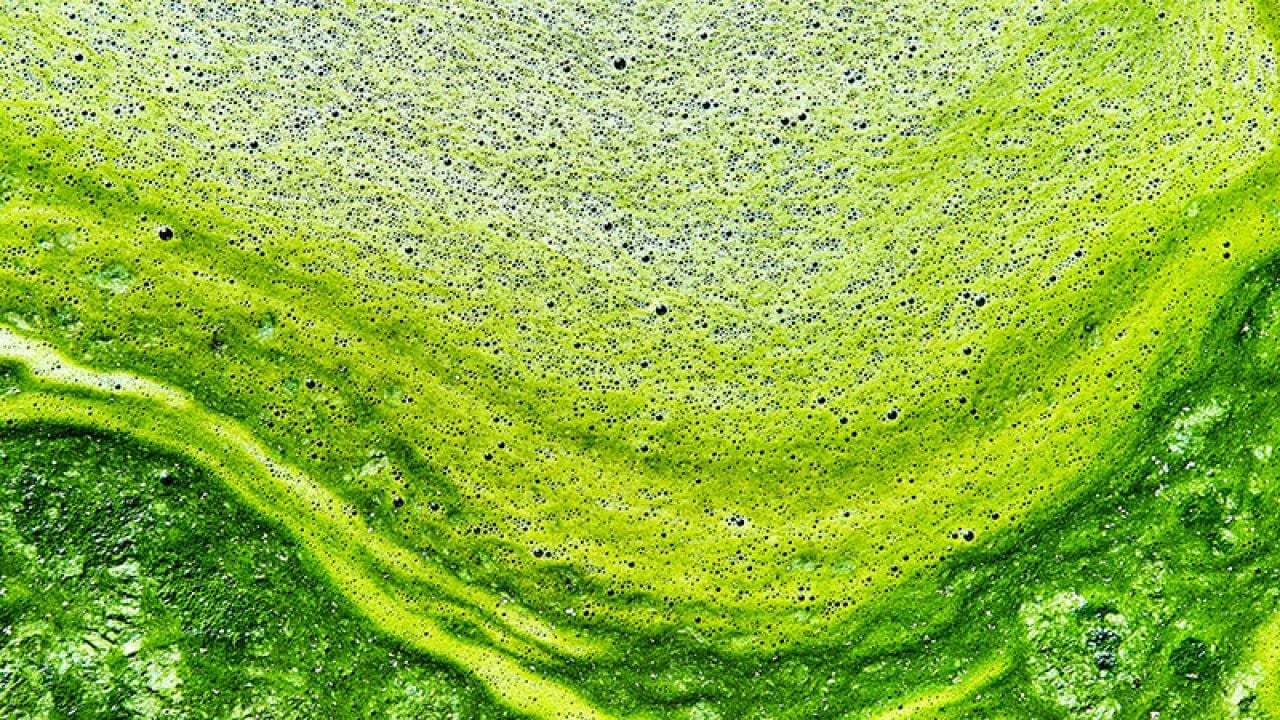
As summer heats up, news of fatalities from brain-eating amoeba seems to be everywhere – and people planning to spend time in and near local rivers and lakes might be concerned about contracting the dangerous infection. They may want to focus instead on toxic algae blooms, a much more common risk.
The single-cell amoeba Naegleria fowleri is found in warm fresh waters like lakes or rivers, especially during the hot summer months. It can infect the brain, and once it does, it's nearly always fatal.
But it’s rare, despite the headlines. A far more common and pressing problem is the toxic algae blooms that appear all over the U.S. during warm weather – and, increasingly, year-round. Toxic algae caused over 300 emergency room visits between 2017 and 2019 alone.
What are toxic algae blooms?
Toxic algae blooms occur when blue-green algae, minuscule organisms called cyanobacteria, grow because of excess nutrients in the water. These nutrients – nitrogen and phosphorus – frequently enter waterways through runoff that contains fertilizer and animal manure commonly used in farming. (Urban runoff and septic leaks can also be smaller sources of the chemicals.)
The cyanobacteria can produce dangerous toxins that can poison animals and people through the air and water.
Such outbreaks can cause mild to extreme health effects, depending on the type of toxin and the amount of exposure. Touching or swimming in contaminated water, or even inhaling contaminated air, can result in skin, eye, nose, throat and lung irritation. People exposed to cyanotoxins through contaminated food or water can also experience symptoms like stomach pain, headache, dizziness, vomiting, diarrhea and liver damage.
Dogs are especially vulnerable to the effects of toxic algae contamination because of their tendency to splash and swim in bodies of water. They may also eat dead fish or other animals near a toxic bloom or lick algae from their fur after swimming, which can lead to extreme sickness or even death within hours of ingestion.
Aquatic animals in ponds, streams or lakes with a toxic algae bloom are also at high risk. When cyanobacteria decompose, much of the oxygen in the water can be used up and fish can suffocate.
Toxic algae blooms can even contaminate drinking water supplies. Updating a water treatment system to treat for the toxins can cost a city tens of millions of dollars.
Warmer temperatures and increased fertilizer and manure runoff during the summer create an ideal environment for toxic algae blooms. But off-season outbreaks are also becoming more common as the climate crisis causes temperatures and extreme rain events to increase year-round.
Swimming safely this summer
Before you go swimming or allow your dog to drink from a waterway, check local news reports, public health websites and park alerts for toxic algae blooms in your area. If you’re unsure, don’t swim in or spend long amounts of time near a suspicious body of water – and don’t let your dog drink from it.
Not all algae blooms are dangerous. Only tests can show which are and which aren't.
But iIf a water source has a rotten smell or looks suspicious, with blue or green floating material that looks like scum or paint or is mat-like on the water surface, contact your local authority to have it tested. You can also reach out to local media to get coverage of the outbreak and potentially protect others.
Long-term prevention for algae blooms
Higher temperatures caused by the climate crisis have extended the season when algae blooms are likely to occur. And unchecked agricultural pollution in waterways increases the chances of algal blooms.
Toxic algae blooms are not only an environmental issue – they’re also a public health hazard.
We need policy changes to drastically reduce runoff from farm fields and control algae outbreaks, ensuring the safety of our drinking water and recreational waterways.



